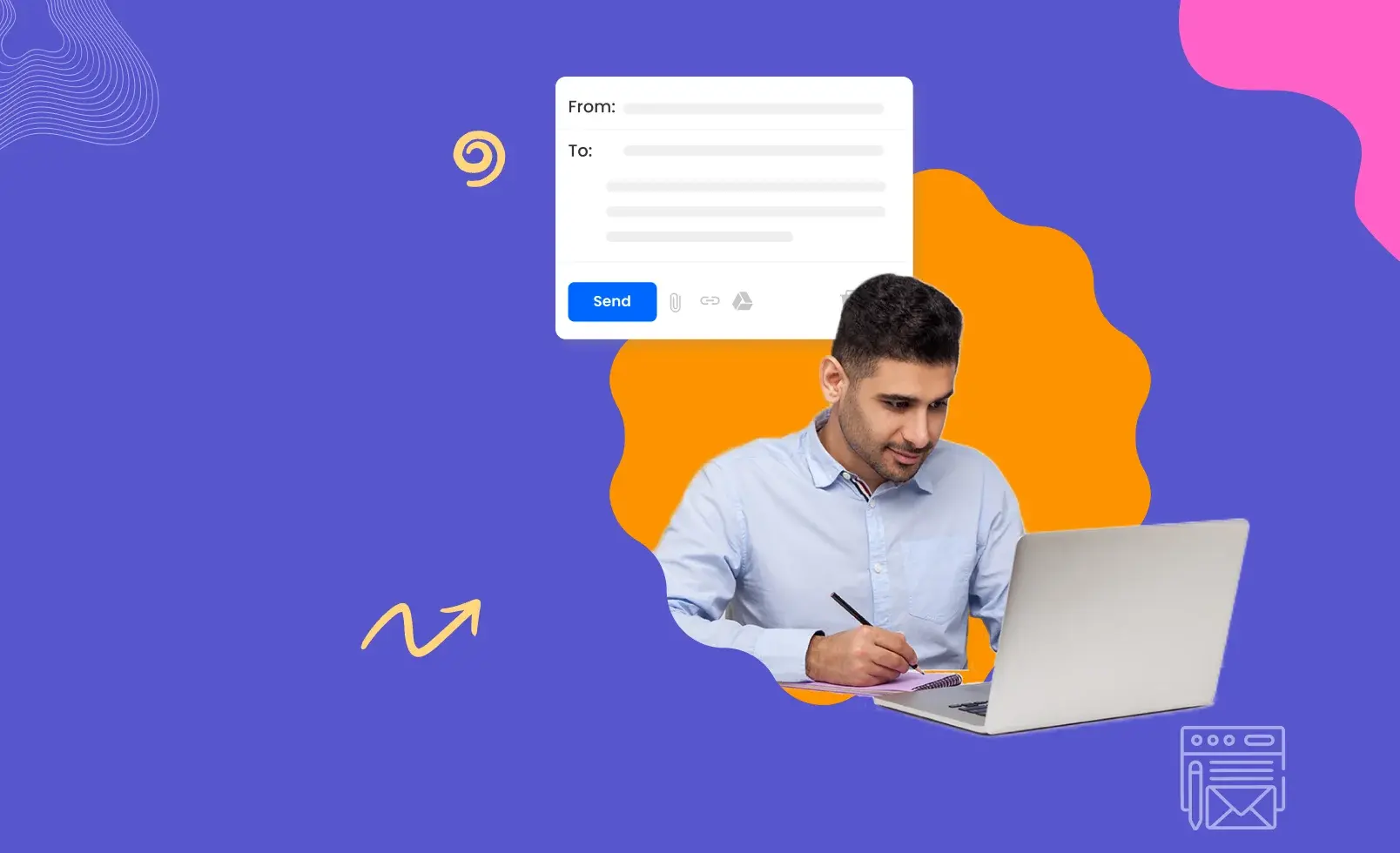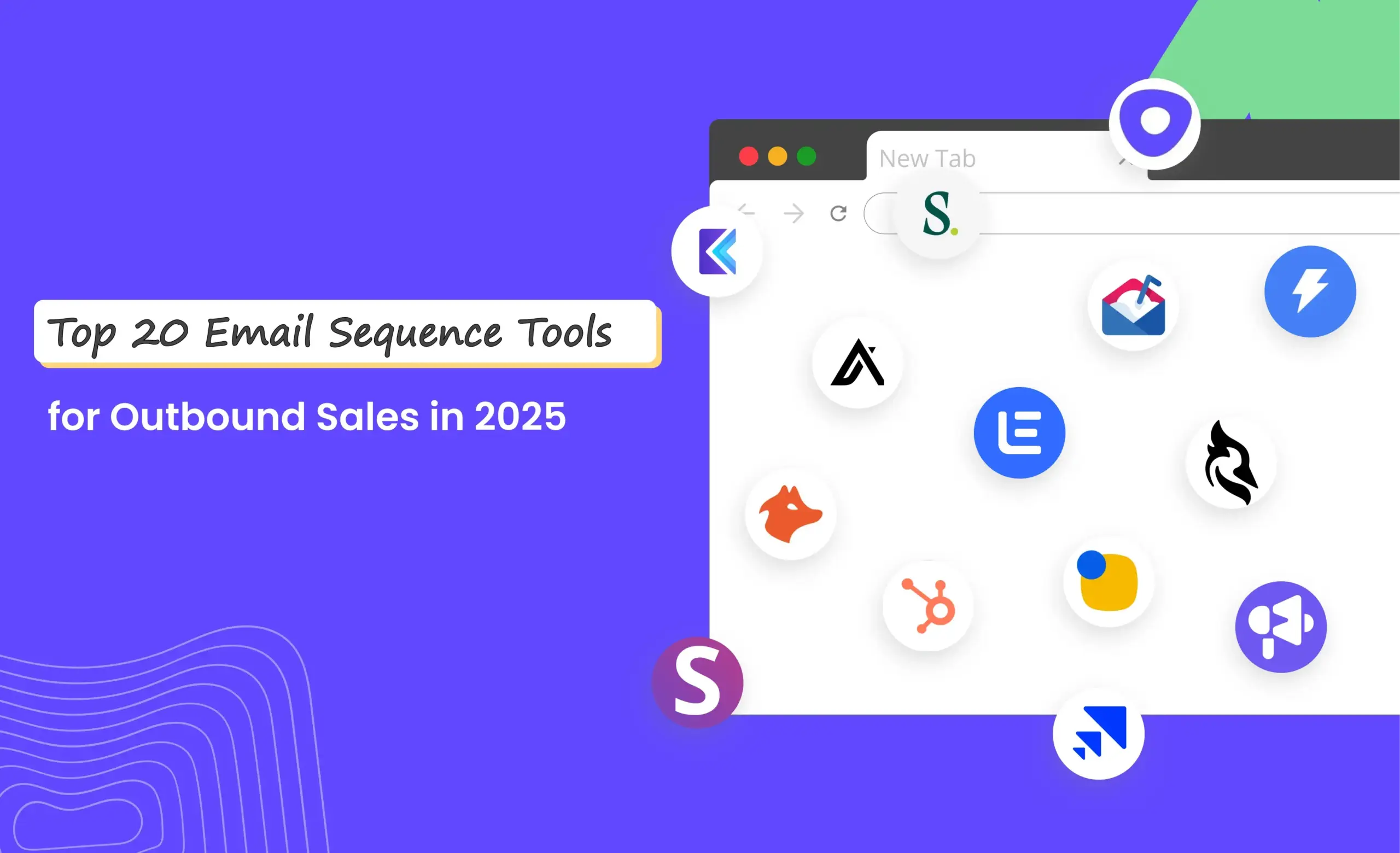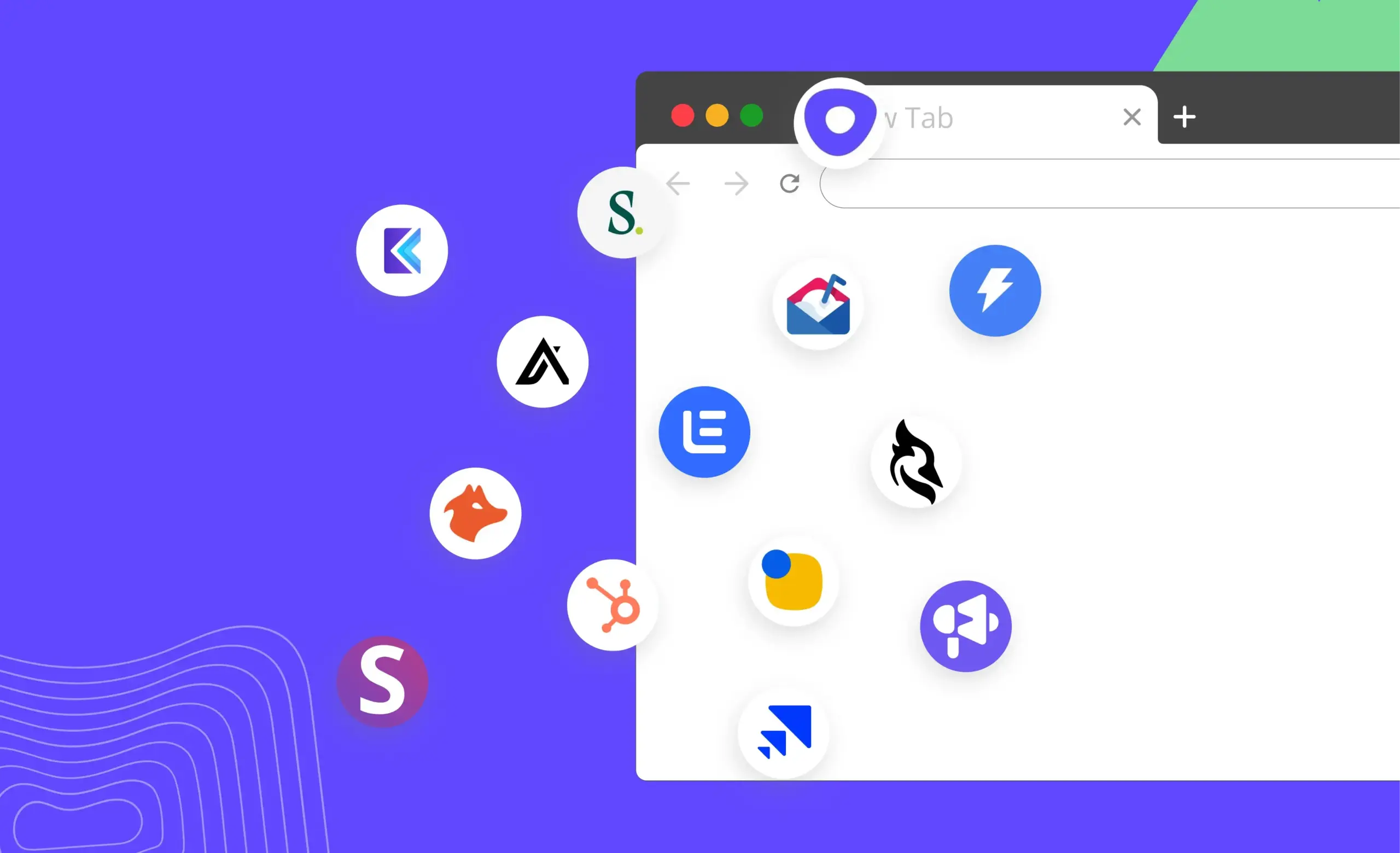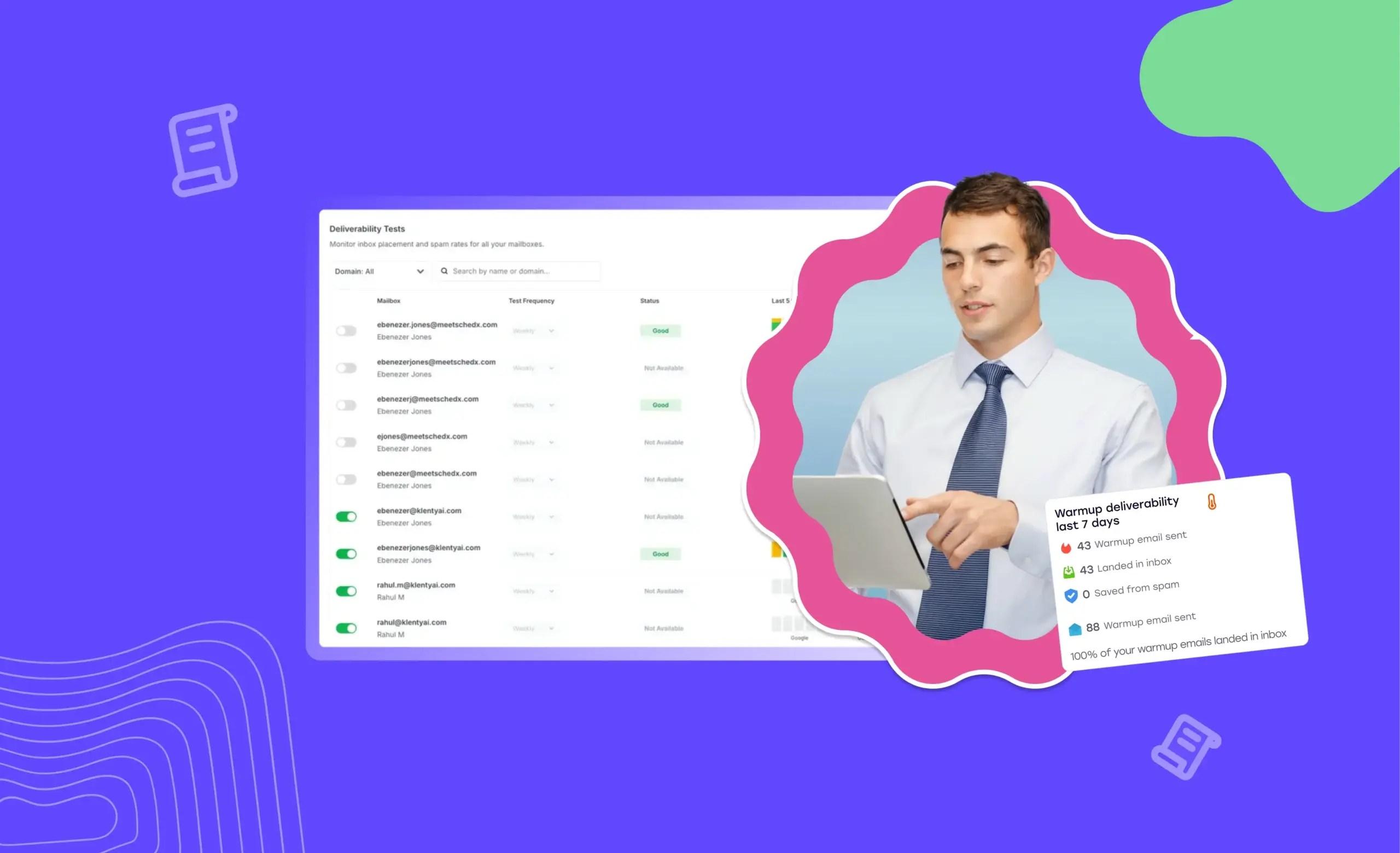Writing cold emails look quite simple at first glance. A quick subject line, some body text, and a sign-off, et voila!
The huffing and puffing occur when the emails from your cold email campaign remain unanswered, or it doesn’t even get opened.
Suddenly you’re scouring the internet for cold email templates or cold email copywriting techniques. And that part is really difficult.
There are a zillion effective cold email strategies you can employ at each and every square inch of the email space displayed at the prospect. But which one will be the game changer for you?
We’re here to give you a definitive cold email structure. A solid framework that will throw your reply rates off the charts. We’ll cover it all—from the subject line to the introduction to the little preview text that appears in the prospect’s inbox—and everything in between.
What Are the 5 Parts of a Cold Email Structure?
Know this: The best cold emails that people really reply to can be broken down into different moving parts. Each part has a beautiful purpose—to inform the reader why they should give a hoot about this email. The salesperson’s job is to know these different parts and learn how to use them to their advantage.
A successful cold email has 5 parts:
- A subject line
- An intro
- An email body
- A CTA
- A signature
More on how to write them below.
i) Create a Subject Line That Catches the Eyes
Like the cherry atop a milkshake, the subject line is the first thing prospects notice in their inbox. To make cold email subject lines that prospects click on, you have to get into their minds.
Their inbox is crammed with a new set of emails every day, and your job is to write a subject line that moves them to click on it.
So what will move the prospect?
- A personalized subject line: With an open rate of 35.69% for personalized subject lines, it’s the best way to get the coveted attention of an unbothered prospect. Personalize using their company name, own name, info from social media sites like Linkedin, location, recent professional updates, or even work-related pain points.
Examples:
- Absolutely agree with your comment on XYZ’s post!
- Is ‘Bestia’ {a famous restaurant in current city} the ‘Capital Grille’ {a famous restaurant in home city} of Los Angeles?
- A question in the subject line that sparks curiosity: Just like how carnivores are always hunting for meat, we’re apparently always looking to satiate our curious minds. And it’s not just us, most in the animal kingdom are looking for information–about their surroundings or about better resources. It is the key driver of evolution.
So, it’s worth a shot to cater to that very primal need of information. Dangle a curious little question or an offer to know more about something in the subject line.
This isn’t just our strategy. Sam Holeman, a top-performing rep from Momence, also asks questions in subject lines in a bid to tingle the prospect’s curious minds. He says this is why many public speakers begin their talks by asking a question. “This is like a basic lesson from college: You can start an essay by asking a question that makes you go up, that makes everybody pay attention,” he adds.
Examples:
- How are you dealing with {Pain Point}?
- Thinking about {specific goal}?
- {manual processes, status quo} Are you making these mistakes?
A/B test subject lines using different techniques and use ones that get the highest response rates. If you’re tracking such metrics manually now, consider using a cold email tool.
ii) An Introduction That Is Personalized
Your cold email will meet a frosty end if the reader is not impressed with the opening line of your cold email.
Introductions like “Hey, I’m XYZ from ABC company” will be ignored within a blink of time.
The point in case is that writing a personalized introduction is mission-critical. What are some of the best ways to introduce yourself in a sales email or write a personalized cold email?
- Addressing 1 confirmed common pain point or problem in the industry
- A joke and then relate it to the product/problem. Make sure the joke is relatable
- Using the power of mutual connections from past work experiences or LinkedIn connections
- Personalize based on their activity or new news on their LinkedIn profile
- Personalize based on your previous cold calls to prospects
Pro tip: Don’t treat the subject line and the introduction separately. If you’re promising to solve problem X in the subject line, don’t open your email copy with a fun fact about Broccoli. The reader will be reeling from ‘What the heck is this person trying to say’ and will stop reading it immediately.
Example of a good cold email intro:
Subject line: With 5 days remaining in Q1…how’s the quota doing?
Introduction: Reps when Q1 nears its end.

iii) Add ‘What’s in It for Them’ to Hook the Prospect
This is the main section. The rib eye of your cold email. The Optimus Prime. And here, you’ll take the subject line and the personalized introduction forward. As in, make a point, or give answers to the promises you made in your subject line.
And instead of listing the 487 features your product/service provides, answer what benefit potential customers will get if they switch to or buy your solution.
What’s In It for Your Prospect?
- Better integrations?
- Reliable freelancers?
- Shorter sales cycles?
- Increased project velocity?
But remember, the WIIFT depends on the prospects’ levels of awareness and their role. And you often would not know that until you’ve engaged with them through multiple follow-up emails, so keep offering different WIIFT in your follow-up emails. And if you’re doing account-based selling, the WIIFT message will keep changing. To add more meat to your WIIFT copy, support your claims with a side of good social proof—use case studies, G2, Capterra, or Trustradius reviews.
Here are email examples of how a rep can use WIIFT for 2 batches of prospects. Picture this: SDR Cooper is writing the first cold email of his outreach campaign to SMB SaaS businesses (target audience) that have sales teams of 5-10 salespeople in order to sell a sales outreach tool.
1) Cold email sent to batch #1 when you can share a case study:
Reps when Q1 nears its end.

Do quarter-ends look like this for everyone? Times Now’s doesn’t. They hit 100% quota already with 5 more days to go.
Their secret? They automated their cold email outreach—freeing up at least 5 hours for each sales rep.
With the newly-found time, their reps doubled down on personalizing cold emails for prospects that showed the highest intent and, as a result, booked 5 times more meetings.
2) Cold email sent to batch #2 when you don’t have a case study to share:
Startups Codex, Rolo, and Stinten have made headlines recently in the SaaS world with their massive growth story. What do they all have in common?
They used sales automation to scale their outbound outreach by 3x. Here’s the TL: DR version of what they were able to achieve: (you could get this kind of data by checking Builtwith)
- Each rep could now handle thousands of prospects
- Each rep is able to save up to 2 hours of their time by not having to update their CRMs manually
- More targeted outreach, more revenue
Resources To Share Based on the Prospect’s Level of Awareness:
- Prospect unaware of the problem: Share resources (industry reports, case studies, podcasts, etc.) that reveal the problem's impact on their business and the potential benefits of addressing it.
- Prospect aware of the problem and seeking a solution: Show how your product/service has helped customers achieve their goals by sharing relevant e-books, use-case decks, case studies, and blog posts.
- Prospect aware of the problem but comfortable with the status quo: Acknowledge that the status quo is acceptable, but emphasize the potential for growth with your solution. Use case studies and FOMO (Fear of Missing Out) techniques to encourage them to consider a change.
iv) Soft Call to Action (CTAs)
In B2B sales, hard CTAs that ask for a meeting are no longer effective. Look at it from the prospect’s perspective. Their inbox is filled with hundreds of emails asking them the same question - when’s a good time to have a 15-minute chat? Can all of them be super relevant to the prospect?
Probably not. That’s why you have to stop yourself from asking for meetings unless you’re absolutely sure they’d benefit from one. Metadata’s quota-crushing SDR manager, Ashley Dees, suggests using soft Calls to Actions instead of directly asking for a meeting point-blank. She asks questions like “Would it be worth learning more?” or “Interested to learn more?”
v) Email Signature
Email signatures are like a digital handshake. It's the last impression you leave on a prospect, so make it count. This would also include the sign off message you write to end the cold email.
Ensure your sign-off is memorable and the signature includes all the information a prospect needs to identify you, such as your name, company, and phone number. Let's be honest, we've all received cold emails, and our first instinct is to Google them or find them on LinkedIn just to ensure the email is legit.
So, mentioning those details can help build credibility and makes it easier for them to contact you if they're interested.
What Your Completed Email Sign-off Should Look Like:
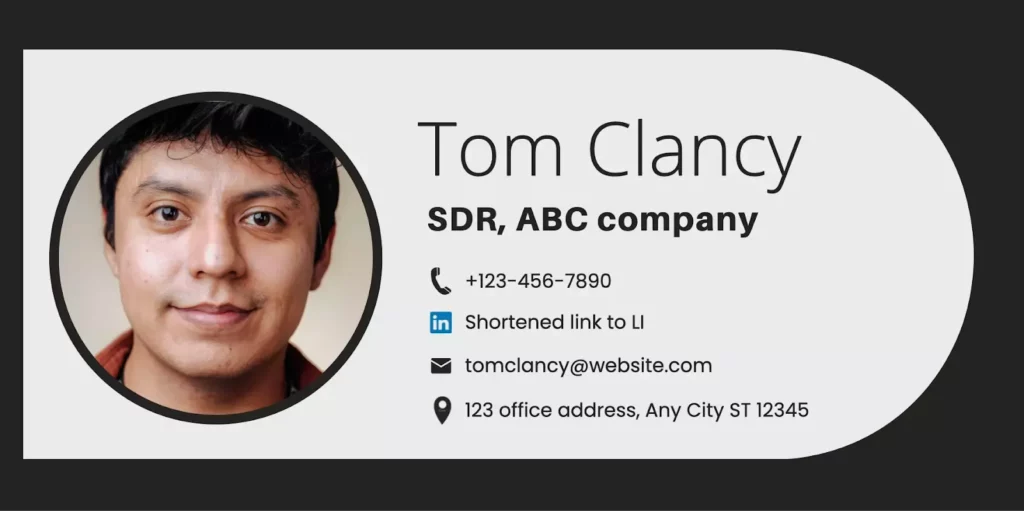
Where To Create Your Own Email Signature (FOR FREE):
- Canva (for clean aesthetics),
- HubSpot (for professional use + if you want to add more links,
- WiseStamp (if you want a lot more customizations to add to your sign-off.)
Some Email Sign-Offs You Can Use:
- Cheers
- Hope you have a good/great week/day/morning/afternoon/evening/night
- Enjoy the evening
- Hope you find the (the content piece you attached) useful
- Wishing you a productive Monday
- Do not go gentle into that good night
- Here’s a reminder to hydrate
- Wishing you good karma
- Enjoy {vacation/PTO}
- This is the way (Quote, Mandalorian, Disney TV show)
What Should You Avoid in a Cold Email Structure?
Even the best of us can make mistakes when sending professional emails to decision-makers.
To prevent you from making the same mistakes, we have listed some common mistakes that can hurt your chances of getting a response:
1) Long Emails
Long cold emails are a big no-no! Keep it short and sweet because no one has the time to read through endless paragraphs of text. Ideally, stick to 120 words or less in your email and avoid losing the reader's attention before starting.
2) Clickbait Subject Lines
The numbers 911, the color red, or the word ‘sale’ all have similar effects on our minds, we’ll immediately be hooked. But using them solely for the purpose of getting someone’s attention, is called clickbait. Often employed by email marketers and internet media companies, it’s bait for people to click on something.
Don’t use it. Period. If you’re doing B2B sales, don’t resort to mind tricks to get the prospect’s attention. You’ll lose it before you can say, Jack Robinson. Clickbait subject lines will also get you a one-way ticket to the spam folder.
3) Informal Email ID
Your email ID can say a lot about you, and using an informal one can make you look unprofessional or inexperienced.
4) Grammatical Errors
Don't let basic grammatical errors ruin your chances of landing a big deal. Always proofread your email for typos and punctuation errors. Use Grammarly as your last-in-line defense system.
5) Unnecessary Use of Uppercase, Special Characters
Overusing uppercase caps and exclamation marks in any part of the email could land you in trouble, as a lot of email service providers see them as indicators of spam emails.
6) Addressing Recipient With 'Dear'
The word “Dear” has different connotations in different countries. It’s best not to use them at all in sales emails. Stick to Hi, Hello, Hey, or Respected. Remember that cultural nuances play a significant role in email marketing communication, and it's essential to tailor your language accordingly.
In Short
Don’t treat your cold emails like the formal letter we were trained to write in 7th grade. It’s not a letter, it’s an elevator pitch in email form.
Moving on to pressing questions for the speed reader.
FAQs
Is Cold Emailing Legal?
In the US, the CAN-SPAM Act requires that commercial emails include a valid physical address, a clear opt-out method, and accurate routing information.
In Europe, the General Data Protection Regulation (GDPR) requires a valid reason for contacting the recipient and the ability to explain how their data was obtained.
The UK GDPR requires consent from the recipient and the inclusion of company details in the email.
In Australia, the Spam Act requires either expressed or inferred consent, clear identification of the sender, and an easy-to-access unsubscribe link.
What Is a Cold Email Sequence?
It typically consists of a great subject line, an introductory line that hits the pain point, a soft call-to-action, and an email signature.
